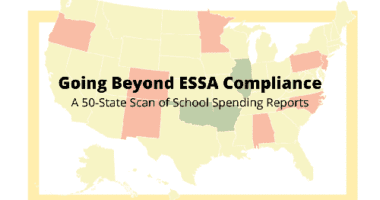It’s Time to Consider Removing Metal Detectors from Schools Now
This week, several members of Congress complained about the hardening of the Capitol after last week’s violent insurrection. They complained that the metal detectors created chaos and lines, infringed on their liberties, and were a diversion of valuable resources. These are the same complaints that advocates have been making about the hardening of school buildings for years.
Immediately after this news spread, I thought about a 12-year-old girl in Washington, DC — just blocks from the very same Capitol on which insurgents laid siege — who told me that she begins her day flanked by law enforcement officers, standing in line waiting to go through a metal detector. She’s only in middle school, and yet this Black child is made to feel like a criminal walking through the school doors. She was also acutely aware that this was both a waste of time and a waste of resources. She is right.
Why Do We Need Schools Free of Metal Detectors?
Many schools across the country do not require students to walk through metal detectors every day. The truth is that schools with more students of color are more likely to use metal detectors, locked gates, sweeps, and law enforcement to harden schools. Research has found that the percentage of students of color who attend schools is the greatest predictor of the presence of these measures, even when controlling for other factors such as neighborhood crime, poor school climate, and other factors that may explain school disruption. This research also shows that schools with 50% or more students of color were more than 18 times more likely to use a combination of metal detectors, school police, locked gates, and sweeps than schools with less than 20% students of color. In other words, the distinguishing factor of the schools that have metal detectors is not even the amount of crime in surrounding neighborhoods — instead, it is whether or not a large number of Black and Latino students attend.
Of course, we should not be surprised that Black and Latino children are treated inequitably in schools. If we needed evidence (and many of us did not) the entire country just watched White supremacists storm the Capitol without the brutalization and police force Black bodies are met with when they are protesting for the simple right to live.
Part of the interest in metal detectors is the perception of safety. However, there is no evidence to support that metal detectors prevent violence in school settings. And for many students, the presence of metal detectors make them feel less safe, not more. It makes them feel like they attend school inside of a prison or that their educators perceive them as a threat. Experts, researchers, and advocates agree on this one thing: Trusting and caring relationships among students and staff, rigorous and engaging curriculum, and equitable discipline policies make schools safer than metal detectors could ever make them.
Why Is Now the Time to Remove Metal Detectors in Schools?
There isn’t any evidence that metal detectors actually work to prevent things like school shootings or other types of violence. In fact, the relentless exposure to discrimination, police brutality, the endless viral videos of police shootings, and other forms of racism has been shown to be associated with PTSD and mental health challenges. When you add the toll of the pandemic, which has disproportionately affected Black and Latino communities, the removal of these devices has never been more important.
Instead of investing in the costly hardening of schools, we should be moving away from punitive, racist, and hardened systems to create equitable learning environments that actually keep kids safe. School leaders should also make policy decisions that send positive messages to students about their value, safety, and well-being. They can do this now by divesting in metal detectors and instead investing in welcoming and equitable discipline policies and integrated wraparound services and supports.
Now is the time to consider removing metal detectors in public schools.










